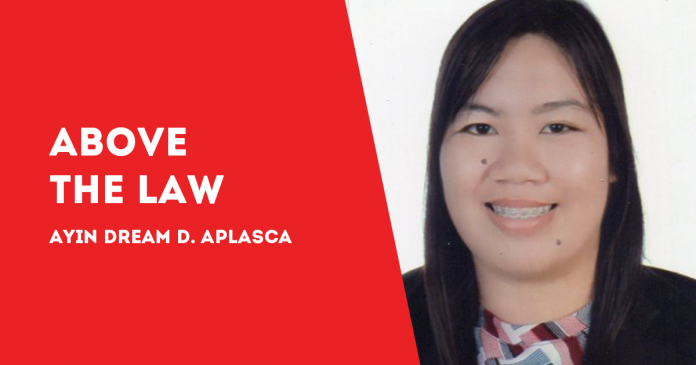
A LOT already happened in the first few days of March – from the arrival of the 600,000 doses of Sinovac vaccine against coronavirus disease 2019 (COVID-19) to the botched “sell-bust” operation between the Philippine Drug Enforcement Agency (PDEA) and Philippine National Police (PNP) to the oral arguments on the Anti-Terror Law, and just recently the Court of Appeals (CA) decision on the rebellion case filed against former senator Antonio Trillanes IV.
These events are too much to handle for some. They may think our country’s current situation is getting worse. In today’s issue, I’m discussing the decision of the CA on the rebellion case of Trillanes. Why the fuss?
The CA favored the amnesty case of Trillanes without invalidating the orders of President Rodrigo Duterte. Let us first revisit the past why this decision came out.
In 2018, the Makati City Regional Trial Court Branch 150 upheld the legality of Duterte’s Proclamation No. 572. The proclamation revoked the grant of amnesty to Trillanes by former President Noynoy Aquino through Proclamation No. 75. As a result, the Department of Justice (DOJ) filed a motion to reopen the rebellion case against Trillanes. Thus, there was the issuance of an arrest warrant and a hold departure order against Trillanes.
The former senator brought the case to the higher court to appeal the decision of the lower court, arguing that the latter committed grave abuse of discretion in reopening the case. The lower court also summarily granted an Omnibus Motion based on a revoked amnesty.
The incidental questions raised against the lower court were:
(1) May amnesty be revoked?
(2) Who may revoke it?
(3) When it may be revoked, if at all?
The CA ruled that the lower court erred in reopening the trial because it did not carefully study the evidence submitted by Trillanes.
It should be remembered that Trillanes was asked to show proof of the application form that indeed he applied for amnesty. He submitted affidavits from defense officials saying that he indeed had applied. However, the lower court ruled that these were insufficient to prove he was given amnesty.
Interestingly, the CA upheld Proclamation 572 which revoked the amnesty granted to Trillanes. Now, the latter questions it, alleging that Duterte violated the equal protection clause and the right against double jeopardy.
The argument on equal protection clause spurred from the fact that it was not only Trillanes who was granted amnesty but also other mutineers. The CA ruled that the proclamation “does not preclude the revocation of other grantees’ conditional amnesty at some future time if found that they also breached or failed to comply with the amnesty conditions.”
Another argument is on the right against double jeopardy. This right is constitutionally protected in Section 21, Article III of the 1987 Philippine Constitution. It means that a person cannot be charged with the same or identical crime when such person was already previously convicted or acquitted of a similar crime. The termination of the case may be done even without the consent of the accused.
The law provides that there is consent when the prosecutor or the accused wants to postpone or ask for reinvestigation, and the court chose to dismiss the case provisionally. Here, there is no double jeopardy if the case will be reopened.
It should be noted that in the recent case, Trillanes gave his consent when he filed his ex-parte motion to dismiss. The CA ruled that in this situation, Trillanes deemed to have expressly given his consent to such dismissal.
Considering all of these, we may now ask: “What’s next?”
As of this writing, the question of the constitutionality of Proclamation No. 572 is still pending at the Supreme Court. Another interesting fact is that Chief Justice Diosdado Peralta is in charge of this case.
This is one of the things I am interested to know, too. It is a big part of the rule of law and how the Highest Court of the land will rule on this./PN





